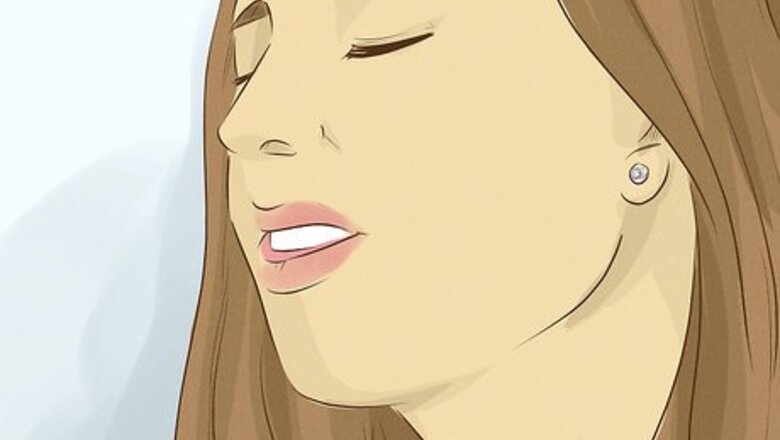
views
X
Trustworthy Source
PubMed Central
Journal archive from the U.S. National Institutes of Health
Go to source
Many OBEs happen accidentally during altered states of consciousness—for example, you might have one while you are falling asleep, having a near death experience, or are under the influence of certain drugs or medications.[2]
X
Research source
However, if you’re curious about having an OBE, there are some simple and safe techniques you can use to try to induce one. Keep an open mind and focus on exploration rather than results!
Trying the “Early Morning Method”
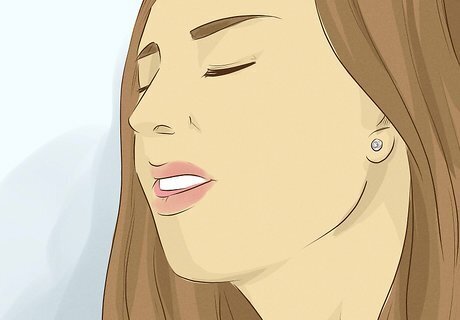
Set a firm, positive intention to have an OBE. Before you try to have an OBE, make a conscious decision that you will have one! Regularly remind yourself of your intention, and do so more frequently as you approach the time when you want to attempt the OBE. This is especially important in the last few hours before your designated time.Did you know? Many people view out of body experiences as paranormal or spiritual events, while others believe the phenomenon is physical. You might try repeating a specific phrase or mantra to yourself, such as, “Tonight I will consciously leave my body and then return to it.”

Designate a time and place for your OBE. Pick a specific time to attempt an OBE and designate a comfortable and familiar “practice area” outside of your regular bed where the OBE will take place. Your designated area should be a quiet and comfortable spot where you can focus without distraction. For example, you might decide, “I will have an OBE tomorrow night after I go to bed.” Then, designate your couch as the space where you intend to have the OBE. It’s important to choose a spot other than your regular bed for this. Otherwise, you are more likely to simply fall asleep instead of entering an OBE state as you drift off! Look at this designated area as a space for personal exploration. You can even decorate the space ahead of time to make it feel more special. For example, you might hang crystals to create an otherworldly vibe.

Set your alarm for 4 hours after your bedtime. Go to sleep in your regular bed at your usual bedtime. When you get ready for bed, set an alarm on your clock or phone to wake you up about 4 hours after you expect to fall asleep. You may need to adjust the time you choose for your alarm based on how long it takes you to fall asleep. The alarm should go off after you’ve had plenty of time to enter deep REM sleep.
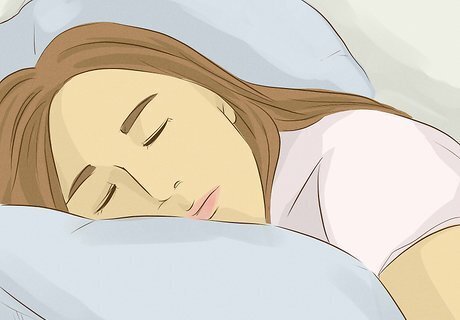
Fall asleep in your regular bed while thinking about your intention. As you’re drifting off, try to focus your attention entirely on your intention to have an OBE. This should be the last thing you consciously think of before you fall asleep. If you find your thoughts wandering, gently direct your focus back to your intention. You may find it helpful to repeat your chosen phrase or mantra affirming your intention.
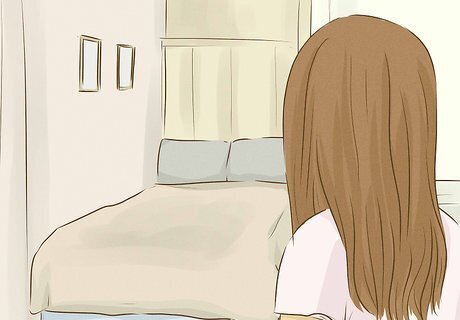
Move to your “practice area” after the alarm goes off. Once the alarm wakes you, get out of bed. Sit quietly for about 15 minutes, then move to your couch or wherever you have chosen to have the OBE. Try to clear your mind of all thoughts outside of your intention to have an OBE. Mute your phone and make sure you won't be interrupted by pets or family members during your practice sessions.
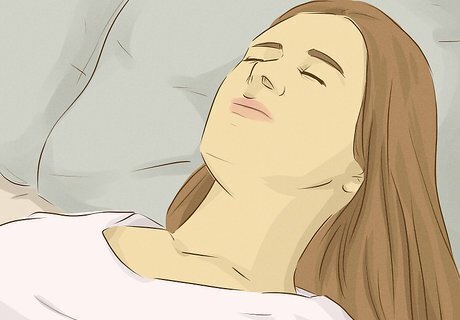
Lie down while focusing on your intention to have an OBE. Once you move to the designated spot, lie down on your back in a comfortable position and meditate. You can either rest with your arms at your sides or with your hands folded over your chest—whatever feels most relaxing to you. Silently repeat your intention to yourself. For example, you might say to yourself, “I am now leaving my body,” or “I will now have an OBE.”
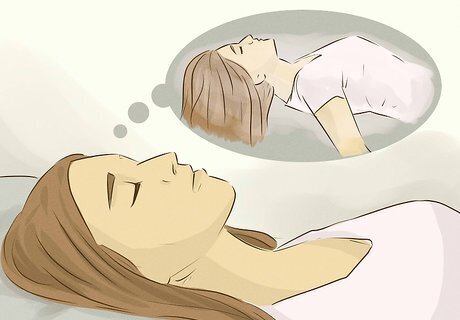
Imagine yourself leaving your body and exploring your home. As you get comfortable, close your eyes and visualize yourself moving away from where you are lying down. Walk around different rooms in your home, looking at familiar things and examining specific objects. Stay calm and open yourself up to the experience. For example, you might see yourself going over to look at a painting on the wall or picking up a favorite knick knack from the shelf. Avoid thinking about or focusing on your physical body. As you get more comfortable with this type of visualization, you can try exploring beyond your home. For example, try walking down the street outside your home or even visualize yourself floating above your neighborhood.
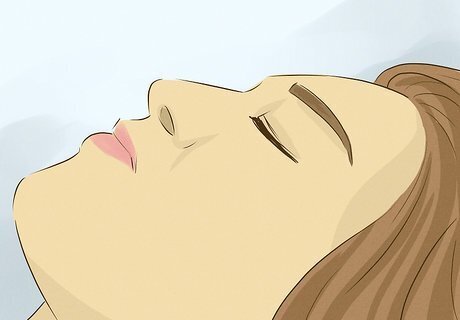
Keep focusing on having an OBE as you fall asleep again. As you picture yourself exploring your home, keep repeating your intention to have an OBE. You should continue to consciously focus on these thoughts as you drift off to sleep. Ideally, you will enter an OBE state as you make the transition back into sleep. OBEs that occur as you are falling asleep may be a form of lucid dreaming. The goal is to stay conscious and able to control your experience as you re-enter REM sleep.
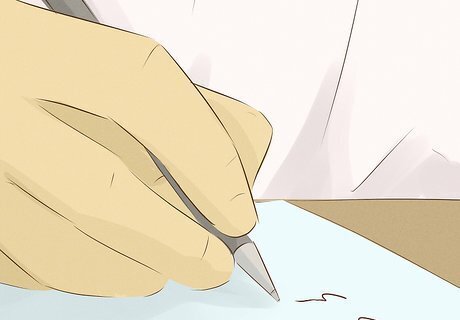
Be patient and record your experiences in a journal. Don’t be frustrated if you aren’t successful the first time! You may need to practice this technique repeatedly before you get the results you want. Try to look at the process as relaxed meditation and avoid focusing only on results. After each practice session, record the details of your experience, no matter how small, in a dedicated journal. Journaling will help you process and understand your experiences. You can also track your progress more easily!
Using a Visualization Technique
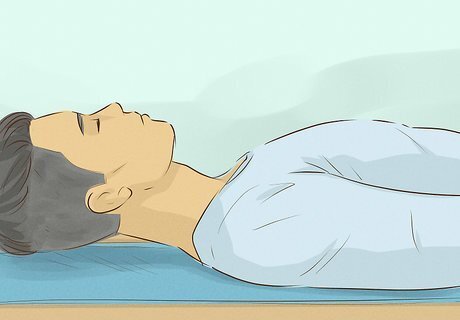
Lie down on your back in a comfortable position. Find a quiet, comfortable spot where you can lie down without noise or distractions. You could lie down on a bed, your couch, a yoga mat, or even on the grass if you can find a cozy outdoor spot where you won’t be disturbed. Try to clear your mind. Let your hands rest on your chest or by your sides—whatever is comfortable for you.
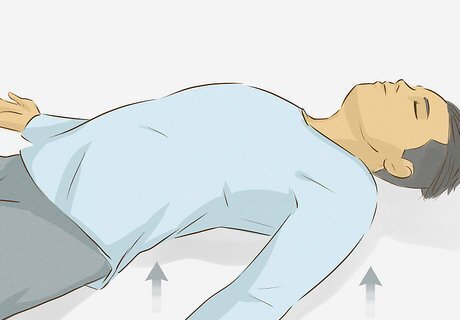
Imagine yourself rising to float above the bed or floor. As you get comfortable, close your eyes. Try to picture your body gently floating upwards and hovering a short distance above whatever surface you’re lying on.Tip: This technique is a type of visualization meditation. Look for basic guided visualization techniques to help you build the skills you need for this kind of OBE. Try to focus entirely on the image and sensation of yourself floating. If your attention wanders, gently redirect it.
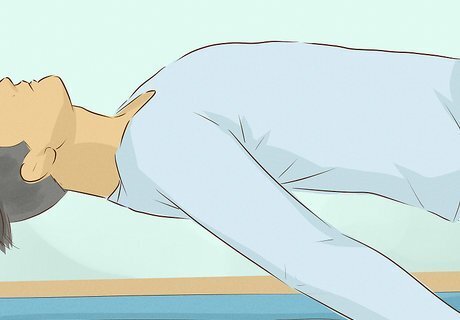
Hold that position until you no longer feel the bed or floor. As you picture yourself floating there, try to feel it as well as visualize it. Imagine that there is only empty air beneath you. Keep focusing on these sensations until you can no longer feel whatever solid surface is under you. You may need to maintain your “floating” visualization for some time before you can achieve this loss of sensation. If you find yourself losing focus, take a few deep breaths and try again.
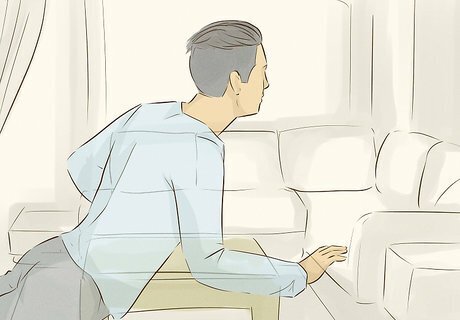
Picture yourself moving around to explore the room. Once you feel like you’re truly detached from the surface beneath you, imagine yourself slowly moving into an upright position. Visualize yourself walking or floating around the room, examining different objects and details of your surroundings. Try not to analyze what you're seeing or doing--just let the experience unfold. You may be tempted to turn around and look at your own body, but don't try it until you’ve gotten comfortable with the other stages of the process! Otherwise, you might disrupt the OBE—thinking about your physical body is likely to bring you back to it.
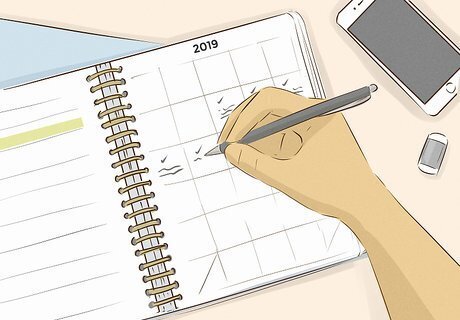
Practice this technique daily until you can comfortably do each step. This visualization-based OBE technique can take a long time to master, so don’t be discouraged if you’re not able to do it successfully at first. Practice each stage of the process repeatedly over time until you can do it easily and comfortably. It may take a few months of practice to learn each stage of this technique. For example, you might need to focus at first on imagining yourself floating above your body, then reaching the point where you cannot feel the surface beneath you, and so on.












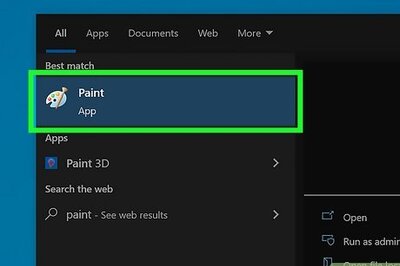






Comments
0 comment